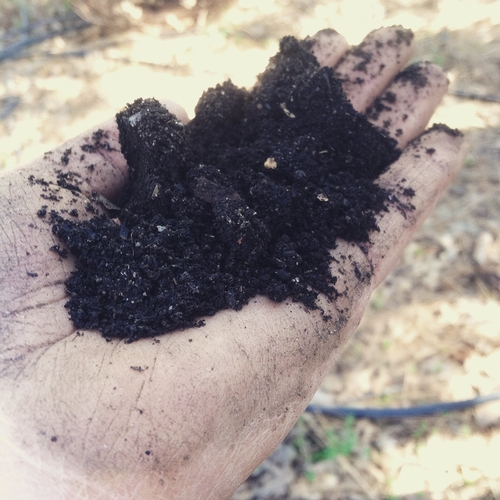Posts Tagged: soil
Planning for Drought Resilience
A quick scan of drought related news is not good for my anxiety levels. A March 21st article in The Atlantic reports how our warmest winter in 100 years (by 4.4 degrees on average) is impacting agriculture across California: 17,000 farmers lost their jobs in 2014 and cost the ag sector $2.2 billion. For the first time in 75 years, the Department of Water Resources Sierra snowpack survey for April 1st had no snow to survey. The 2012-2014 California drought is reported to be the worst in 1,200 years! I am growing tired of watching the weather forecast as well. The pattern thus far: a storm is forecast, the storm arrives and delivers a fraction of what was expected. My new plan is to stop focusing on the lack of rain and snow and start getting serious about building drought resilience into our farm plan.
The reality is that we won't be able to sink a new well or dig a new pond. We are a small farm with very limited capital purchasing power. Does our lack of financial wiggle room mean that this drought may put us out of business? I am hopeful that we can continue to farm within the new parameters that this drought may impose on our business. But we won't be able to do this without a plan.
What is the worst case scenario on your farm or ranch? On my own farm, the worst case scenario would be the complete suspension of our irrigation water allotment. If our water allotment was drastically decreased, could we still make a profit from our farm? Here's a look at what we are planning to do to increase the drought resilience of our land and business.
A simple first step is to increase our soil organic matter. We traditionally grow both summer and winter cover crop on fallow ground. This summer's growing season, we are taking even more land out of row crop production and will plant more summer cover crops. Our favorite is sorghum Sudan grass. Unlike Johnson grass which it is very similar to in appearance, Sudan grass does not grow rhizomes and spread underground. It requires very little water and is a great way to protect open ground in the summer. According to UCCE Horticulture and Small Farms Advisor, Cindy Fake, a 1% increase in soil organic matter results in an additional 16,000 gallons of water retained per acre foot of soil! That is a lot of water. This ATTRA publication has a lot of information on creating drought resilient soils: http://cses.uark.edu/ATTRA_drought.pdf
Another goal this season is to understand exactly how much forage our pigs are able to access from the irrigated pastures we raise them on. I want to know exactly what it would cost if we had to buy in all of the feed for our animals. Understanding the financial impact that the loss of our irrigation water would have on our farm will help us make decisions about the size of our hog herd. If we decrease by 25%, can we keep our feed bill affordable? If there was no water at all, how much would it cost to keep our breeding animals alive?
We irrigate our row crops as efficiently as we can. We deliver water through drip tape and irrigate in the evenings once the day has cooled and evapotranspiration loss is decreased. But I am finding that this is still not enough to make our farm truly drought resilient. I need to know at what point in the growth cycle the crops I produce are most susceptible to water stress. In other words, how can I achieve profitable yields with the least amount of water possible? If I had to use my residential water supply to grow a crop, what is the least amount of water I could utilize without seriously impacting yield? Here is a link to a publication on water efficiency and the critical periods for water stress in orchard crops and vegetables: http://ucanr.edu/sites/placernevadasmallfarms/files/180093.pdf.
Understanding the economics of each of my crops is vital to drought resilience. I need to know which crops to prioritize in the face of limited irrigation water. Are dahlias or sunflowers a more profitable crop for us? Can we increase our early season production and limit production when the temperatures hit the high 90s? I cannot make these decisions without a thorough understanding of the income and expense associated with each crop. The crop metric calculators created by UC Extension can assist you in determining the profitability of each crop you grow. http://ucanr.edu/sites/placernevadasmallfarms/UCCE_Enterprise_Calculators/. By combining my understanding of which crops need water and when with my knowledge of income and expense for each crop, I can begin to create my drought contingency crop plan.
Out of habit, I just checked the weather forecast and saw that some rain is predicted for the end of the week. The predicted moisture will help the cover crop and pasture grow, but it won't alter the long term effects of this drought.
News links and References:
http://www.theatlantic.com/business/archive/2015/03/the-economics-of-californias-drought/388375/
http://www.water.ca.gov/news/newsreleases/2015/040115snowsurvey.pdf
Scott, H.D., L.S. Wood, and W.M. Miley. 1986. Long-term effects of tillage on the retention and transport of soil water. Arkansas Water Resources Research Center. Publication Number 125. 39 p.


